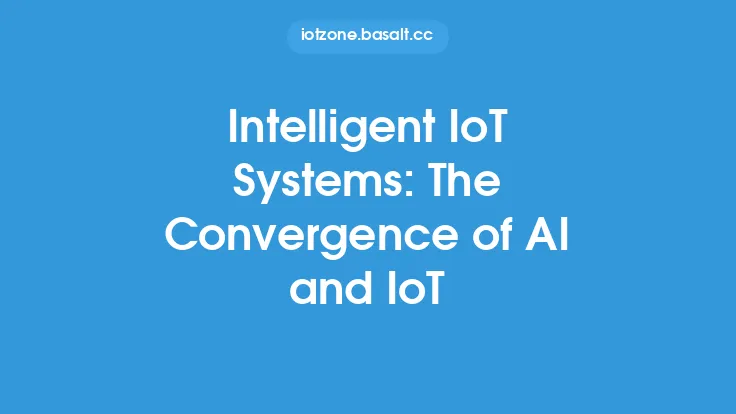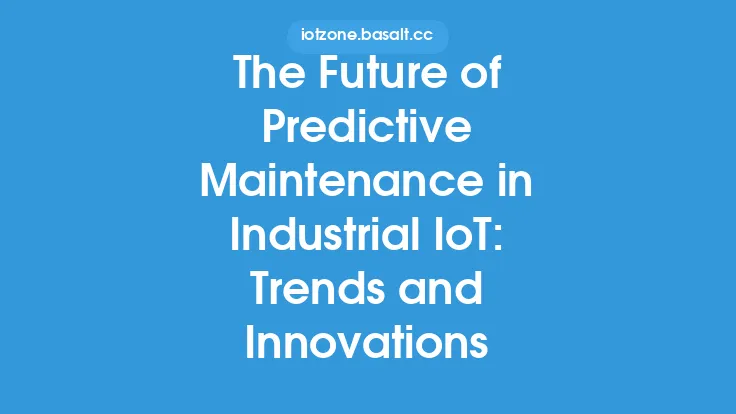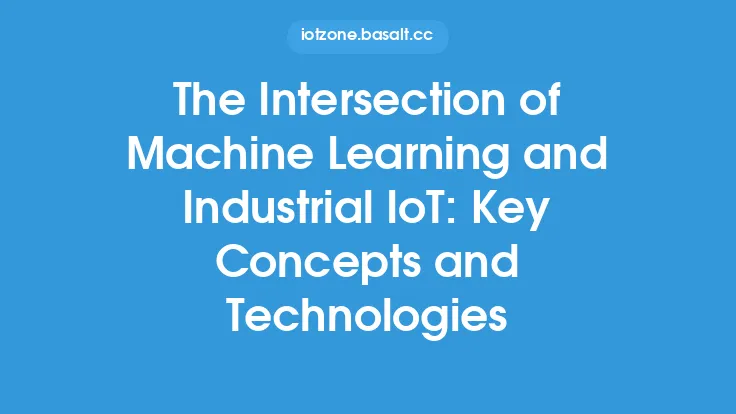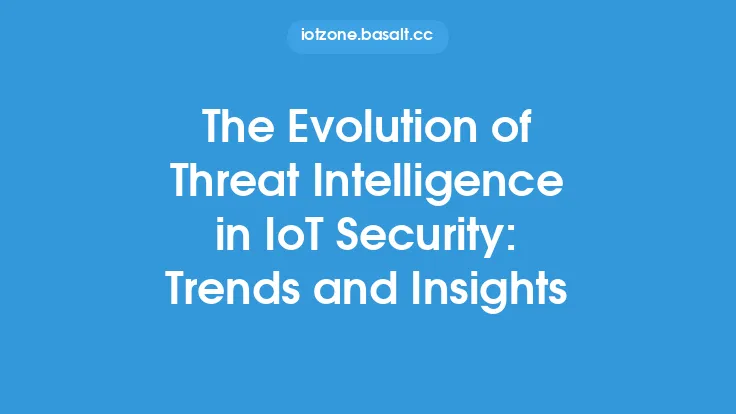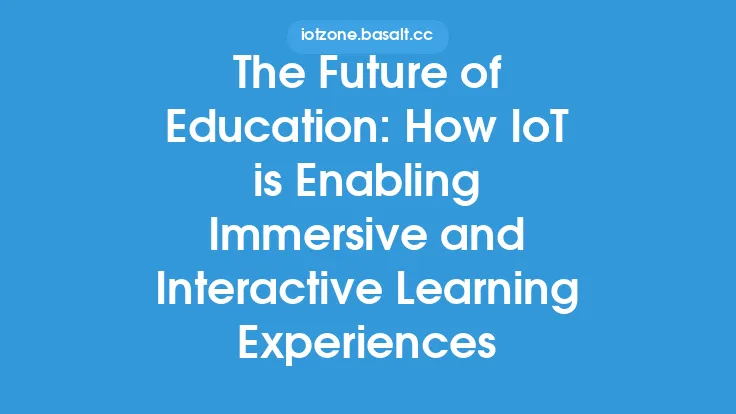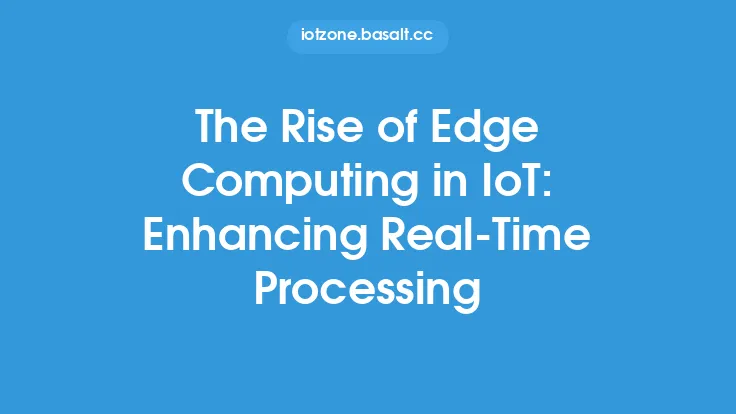The Internet of Things (IoT) has been rapidly expanding, with an increasing number of devices becoming connected and generating vast amounts of data. This has led to a growing need for scalable and flexible infrastructure to support the storage, processing, and analysis of this data. Cloud computing has emerged as a key enabler of IoT, providing the necessary scalability, flexibility, and cost-effectiveness to support the growing demands of IoT applications. The convergence of IoT and cloud computing has given rise to a new paradigm, where devices, data, and applications are interconnected and interdependent.
Introduction to Cloud Computing
Cloud computing is a model of delivering computing services over the internet, where resources such as servers, storage, databases, software, and applications are provided as a service to users on-demand. This allows users to access and utilize these resources from anywhere, at any time, without the need for expensive hardware or infrastructure investments. Cloud computing provides a range of benefits, including scalability, flexibility, and cost-effectiveness, making it an attractive option for IoT applications.
IoT and Cloud Computing Architecture
The architecture of IoT and cloud computing involves a complex interplay of devices, networks, and cloud services. IoT devices, such as sensors, actuators, and smart devices, generate data that is transmitted to the cloud through various networks, including wireless sensor networks, cellular networks, and the internet. The cloud provides a range of services, including data storage, processing, and analysis, as well as application hosting and management. The cloud also provides a range of tools and platforms for developing, deploying, and managing IoT applications.
Scalability and Flexibility in IoT and Cloud Computing
One of the key benefits of the convergence of IoT and cloud computing is scalability. Cloud computing provides a scalable infrastructure that can support the growing demands of IoT applications, allowing users to quickly scale up or down to meet changing requirements. This is particularly important in IoT applications, where the number of devices and the amount of data generated can be highly variable. Cloud computing also provides flexibility, allowing users to quickly deploy and manage new applications and services, and to adapt to changing requirements and conditions.
Cloud-Based IoT Platforms
A range of cloud-based IoT platforms has emerged, providing a suite of tools and services for developing, deploying, and managing IoT applications. These platforms typically include a range of features, such as device management, data processing and analysis, and application development and deployment. Examples of cloud-based IoT platforms include Amazon Web Services (AWS) IoT, Microsoft Azure IoT, and Google Cloud IoT Core. These platforms provide a range of benefits, including simplified device management, improved data processing and analysis, and enhanced application development and deployment.
Security and Privacy in IoT and Cloud Computing
Security and privacy are critical concerns in IoT and cloud computing, particularly given the sensitive nature of the data generated by IoT devices. A range of security threats and vulnerabilities exists, including device hacking, data breaches, and unauthorized access. To address these concerns, a range of security measures and protocols has been developed, including encryption, authentication, and access control. Additionally, cloud providers have implemented a range of security measures, including firewalls, intrusion detection, and encryption.
Data Processing and Analysis in IoT and Cloud Computing
The convergence of IoT and cloud computing has given rise to a range of new opportunities for data processing and analysis. Cloud computing provides a range of tools and services for processing and analyzing large datasets, including machine learning, data mining, and predictive analytics. IoT devices generate vast amounts of data, which can be processed and analyzed in the cloud to gain insights and make informed decisions. Examples of data processing and analysis in IoT and cloud computing include predictive maintenance, quality control, and supply chain optimization.
Real-World Applications of IoT and Cloud Computing
The convergence of IoT and cloud computing has given rise to a range of real-world applications, including industrial automation, smart cities, and healthcare. In industrial automation, IoT devices and cloud computing are used to monitor and control equipment, optimize processes, and improve productivity. In smart cities, IoT devices and cloud computing are used to manage traffic, energy, and water systems, and to improve public safety and services. In healthcare, IoT devices and cloud computing are used to monitor patient health, track medical equipment, and improve clinical decision-making.
Future Directions and Challenges
The convergence of IoT and cloud computing is expected to continue to grow and evolve in the coming years, with new technologies and innovations emerging to support the growing demands of IoT applications. However, a range of challenges and limitations exists, including security and privacy concerns, interoperability and standardization issues, and the need for more advanced data processing and analysis capabilities. To address these challenges, researchers and developers are exploring new technologies and innovations, including edge computing, artificial intelligence, and blockchain.
Conclusion
The convergence of IoT and cloud computing has given rise to a new paradigm, where devices, data, and applications are interconnected and interdependent. Cloud computing provides the necessary scalability, flexibility, and cost-effectiveness to support the growing demands of IoT applications, while IoT devices generate vast amounts of data that can be processed and analyzed in the cloud to gain insights and make informed decisions. As the IoT continues to grow and evolve, the importance of cloud computing will only continue to increase, enabling new opportunities for innovation, efficiency, and productivity.
